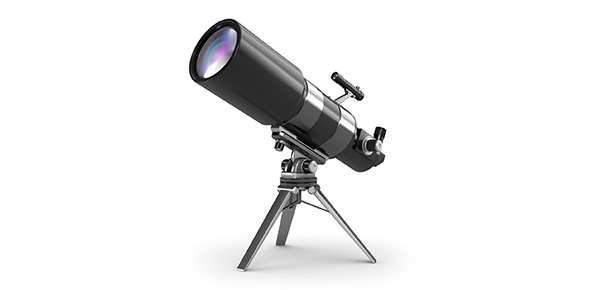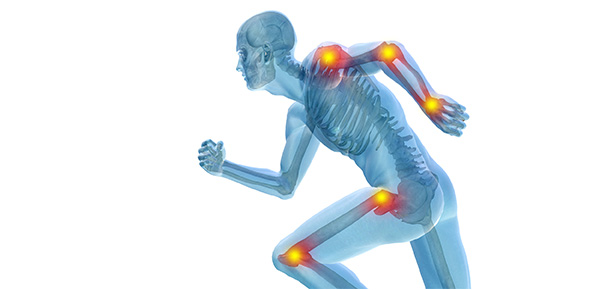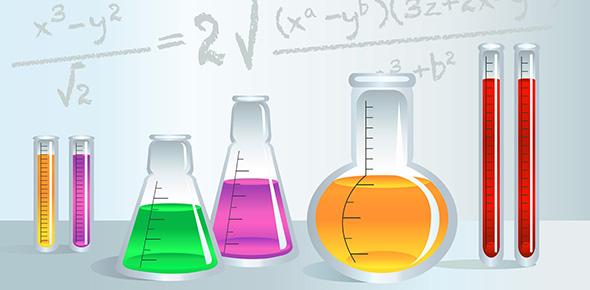Related Flashcards
Related Topics
Cards In This Set
| Front | Back |
|
Sperling 1960 sensory memory
|
•Sperling used a chart containing three rows of letters, which he displayed for a very brief time to his participants.
•Participants were immediately asked to recall as many of the letters as possible and could usually only recall about four or five.
•However they frequently reported having been aware of more letters although they could no longer recall them.
•Sperling decided to test this by changing the procedure slightly. He trained participants to distinguish between three tones..
•He then exposed the chart for the same amount of time but, this time played one of the tones as soon as the chart disappeared.
•Participants were instructed to recall the top row of letters in response to th high tone and so on. Under these circumstances participants were able to recall on average, 3 items from whichever row had been cued by the tone.
•Sperling estimated that the reason why participants could only recall four items in the whole array fades during the time it takes to report back these four items.
•It’s a bit like trying to read the credits that roll up the screen at the end of a film – while you are paying attention to one name, others are disappearing off the screen.
|
|
JACOBS 1887 – capacity of Short-term memory – serial digit technique
|
•Jacobs study of immediate digit span investigated the capacity of STM.
•He read aloud lists of either letters or numbers.
•He increased the length of these lists until participants could successfully recall them only 50% of the time.
•Jacobs used a wide age range in his sample.
•He found that: 1. STM capacity for digits was 9, whereas for letters it was 7. 2. STM increased with age - 8 year-olds recalled 7 digits, whereas 19 year-olds recalled 9 digits.Jacobs concluded that STM has a limited capacity of between 5 and 9 digits and that age does affect STM capacity, since people may improve their recall strategies with age and/or through practice. He also found that numbers were easier to recall than letters as there was less of them
|
|
PETERSON AND PETERSON 1959 – Duration of STM
|
•The best known experiment into the duration of STM is Peterson and Peterson’s Trigram retention experiment.
•Participants were read a nonsense trigram (three consonants that have no meaning, e,g. LTB).
•Immediately after this, participants had to count backwards in threes starting from a very large 3-digit number (e.g. 576) for a specified time period.
•This time period was called the retention interval and varied from 3 to 18 seconds. The counting backwards task was called a distractor task.
•Approximately 90% of the trigrams were recalled after a 3-second retention interval, but only 6% were recalled after 18 seconds.
•This suggests that STM duration is approximately 20-30 seconds.
|
|
Baddeley’s 1966 “Cat/mat” study – encoding in STM
|
•Baddeley’s study examined whether encoding in STM is primarily acoustic (sound) or semantic (meaning).
•In the study, participants were presented with four word lists:
•1. List A – acousically similar (such as cat, mat)
•2. List B – acousically dissimilar words (such as pit, clay, cow)
•3. List C – semantically similar words (such as big, huge, tall)
•4. List D – semantically dissimilar words (such as hot, safe, foul)
•A total of 75 participants heard one list repeated four times. Immediately after this (to test STM), they were given a list that contained all the orignial words but in the wrong order. Their task was to rearrange the words in the correct order.
•They found that those participants given list A (accoustically similar) performed the worst (recall of 10%). Recall for the other lists was comparatively good (60-80%).
•The conclusion was that since List A was recalled the least efficiently, it would appear that there’s acoustic confusion in STM.
•Therefore STM tends to be encoded on an acoustic basis.
|
|
Bahrick et al 1975 – duration of LTM
|
•They tracted down the graduates from a particular high school in America over a 50-year period.
•392 graduates were shown photographs from each of their high-school year book.
•Recognition group: for each photo, participants were given a group of names and asked to select the name that matched the person in the photo. Recall group: participants were simply asked to name the people in the photos without being given a list of possible names.
•They found that in the name-matching (recognition) condition, participants were:
•90% correct even after 14 years after graduation, 80% after 25 years, 75% after 34 years, 60% after 47 years.
•In the recall group (had to identify the photos without any name cues) participants were not quite as successful. They were:
•60% accurate after 7 years, less than 20% after 47 years.
•Bahrick concluded that people can remember certain types of information for almost lifetime. Very long term memory appears to be better when measured by recognition tests than by recall tests.
|
|
Encoding in LTM – Baddeley 1966
|
•Participants were divided into four groups and shown a list of ten words drawn from one of the following categories:
•Acoustically similar words, Acoustically dissimilar, semantically similar, semantically dissimilar.
•After an interval of 20 minutes, during which they were given another task to do, participants were asked to recall, in correct order the ten words they had heard. This procedure was carried out 4 times.
•Recall was much worse for semantically similar words (55%) than for semantically dissimilar (85%). Recall was the same for acoustically similar and acoustically dissimilar words.
•Baddeley concluded that LTM is primarily semantically encoded, as shown by the difficulties participants had in recalling the correct order of the words that had similar meanings.
|
|
Research study – Baddeley, Thomson and Buchanan 1975 – working memory phonological loop
|
•The researchers gave visual presentations of word lists for very brief exposures and then asked participants to write down in serial.
•In one condition, the lists consisted of five words taken from a pool of familiar, one-syllable English words such as harm, wit, twice.
•In the second condition, the five words came from a list of polysyllabic words, e.g. organisation, university, association.
•Average correct recall over several trials showed a marked superiority for the short words.
•They called this the “word length effect” and concluded that the capacity of the loop is determined by the length of time it takes to say words rather than by the number of items. They estimated this time to be 1.5 seconds.
|
|
Research study – Baddeley, Wright and Thomson 1973 – working model visual spatial sketchpad
|
•They investiagted this by giving participants a simple tracking task (following a spot of light with a pointer as it moved round a circular path) while carrying out a simultaneous visual imagery task. They had to imagine looking at an angular block capital such as H, T, F and E.
•Participants were asked to hold the image in their heads and then, starting as the bottom left-hand corner, to respond to each angle as a “yes” if it included the bottom or top line of the letter and a “no” if it did not.
•Participants had enormous difficulty in tracking the spot of light and accurately classifying the corners.
•This seems to be because the two tasks were compteing for the same limited resources of the visual spatial sketchpad.
|
|
Research study – Baddeley 1996 – working memory central executive
|
•He investigated the functions attributed to the central executive of selective attention and switching retrieval plans.
•He asked participants to generate random strings of digits by pressing numbered keys on a keyboard.
•This task was carried out on its own or simultaneously with one of the following: reciting the alphabet, counting from 1, alternating between letters and numbers.
•The generated digit string became considerably less random in Condition 3 when participants were having to switch from numbers to letters at the same time.
•Baddeley concluded that both the random number generation task and the alternation task were competing for the same central executive resources.
|
|
Loftus and Palmer 1974 – reconstruction of automobile accident(leading questions)
|
•The study wanted to investigate the influence the wording of a question has on the participants’ estimates of speed on the actual speed estimate.
•It is assumed that the use of certain verbs would result in higher speed estimates than other verbs.
•Loftus and Palmer used a lab experiment involving 45 students. Short film clips of a series of traffic accidents were shown. Participants were then asked to describe the accident that they had witnessed.
•The critical question asked about the speed of the cars in the collision. Nine participants were asked “how fast were the cars going when they smashed into one another?” whereas for others the verbs “hit”, “bumped”, “collided”, “contacted” were used instead of “smashed”.
- In a follow up study pp were asked if they saw glass at the scene. There was no glass but thos pp exposed to moe emotive verbs reported seeing it.
•Loftus and Palmer found that the witnesses were influenced by the "severity" of the verb and concluded that leading questions can influence the "re-construction" of memory.
|
|
Loftus and Palmer 1974 - results
|
VERB
MEAN SPEED ESTIMATES
smashed
40.8
collided
39.3
Bumped
38.1
Hit
34.0
contacted
31.8
•It seems that participants had different interpretations of the speed of the cars due to the different verbs.
•It is unclear whether the different reported speeds were due to demand characteristics or to a genuine change in the participant’s memory of the event.
|
|
Real life eyewitness testimony - Yuille + Cutshall 1986
|
•Yuille and Cutshall 1986 conducted research into a real-life crime.
•A thief had attempted to steal from a gun shop in Vancouver, Canada. However, the shop owner shot and killed the thief in front of 21 witnesses, 13 of the witnesses were interviewed 4 months later and they were asked misleading questions.
•However, witness accounts remained highly accurate and weren’t adversely effected by the misleading information.
•Misleading information may not affect real-life memories to the same extent as laboratory-produced memories due to emotions experienced at the time.
|
|
Anxiety / Weapons effect on EWT – Loftus etal 1987
|
•Loftus also reported a phenomenon known as “weapon effect”. Participants were asked to sit outside a lab where they thought they were hearing genuine exchanges between people inside the lab.
•In one condition they heard an amicable discussion about an equipment failure. A man with greasy hands then came out of the lab holding a pen.
•In another condition they heard a hostile discussion, followed by the sound of breaking glass and overturned furniture. A man then emerged from the lab holding a knife covered in blood.
•Participants were then given 50 photos and asked to identify the man. People who had witnessed the peaceful scene were more accurate in recognising the man.
|
|
Individual differences Tomes and Katz 1997
|
•Research has shown that many different factors affect eyewitness testimony. However it is clear that not all participants are affected by misleading information, anxiety etc.
•Tomes and Katz 1997 have suggested that people who are more likely to accept misinformation share the following charactersitics:
–They have generally poorer recall for the event
–They score high on measures of imagery vividness
–They have high scores on measures of empathy (i.e. they are good at identifying with the mood of other people).
One factor that seems to allow people to ignore misinformation is when the misleading information is blatantly incorrect or unlikely.
|
|
Geiselman et al 1985 – cognitive interviews
|
•He tested participants by showing them a video of a simulated crime and then testing different groups with a cognitive interview, a standard police interview or an interview under the influence of hypnosis.
•They found that cognitive interview elicited more information from the participants than either of the other two methods.
•A number of subsequent studies have confirmed these findings although Koehnken et al 1999 found that witnesses questined using the cognitive interview also reclaled more incorrect information than those questioned a standard technique. This is probably because the cognitive interview procedure elicits more information overall than other procedures.
|







